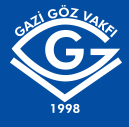Retina-Vitreous
2012 , Vol 20 , Num 4
Optical Coherence Tomography and Fundus Autofluorescence Findings in a Case of Chronic Solar Retinopathy
1M.D., Ankara University Faculty of Medicine, Department of Ophthalmology, Ankara/TURKEY2M.D. Professor, Ankara University Faculty of Medicine, Department of Ophthalmology, Ankara/TURKEY Solar retinopathy is defined as retinal damage that occurs as a result of gazing directly into the sun or viewing a solar eclipse without protection. Blurred vision, central scotoma, visual distortion, and discromatopsy are acute episode symptoms. Visual acuity decreases slightly during the acute phase, but usually improves to 20/40-20/20 levels within 6 months. However, residual scotoma, visual distortion, and discromatopsy appear as factors that reduce visual quality in some cases. Optical coherence tomography (OCT) findings are hyporeflective defects in the outer retinal layers during the chronic phase. In this study, we present OCT and fundus autofluorescence (FAF) findings of a late solar retinopathy patient who was admitted to our clinic with complaints of central scotoma and discromatopsy. A characteristic hyporeflective defect in the outer retinal layer was detected on OCT; additionally a well-defined hypoautofluorescent spot and surrounding irregular hyperautofluorescent area were detected on FAF imaging. In conclusion, there is a high probability of solar retinopathy, even without a history of exposure to the sun, in patients who have defects in the outer retinal layers with typical findings of optical coherence tomography and FAF imaging. Keywords : Chronic solar maculopathy, optical coherence tomography, fundus autofluorescence





